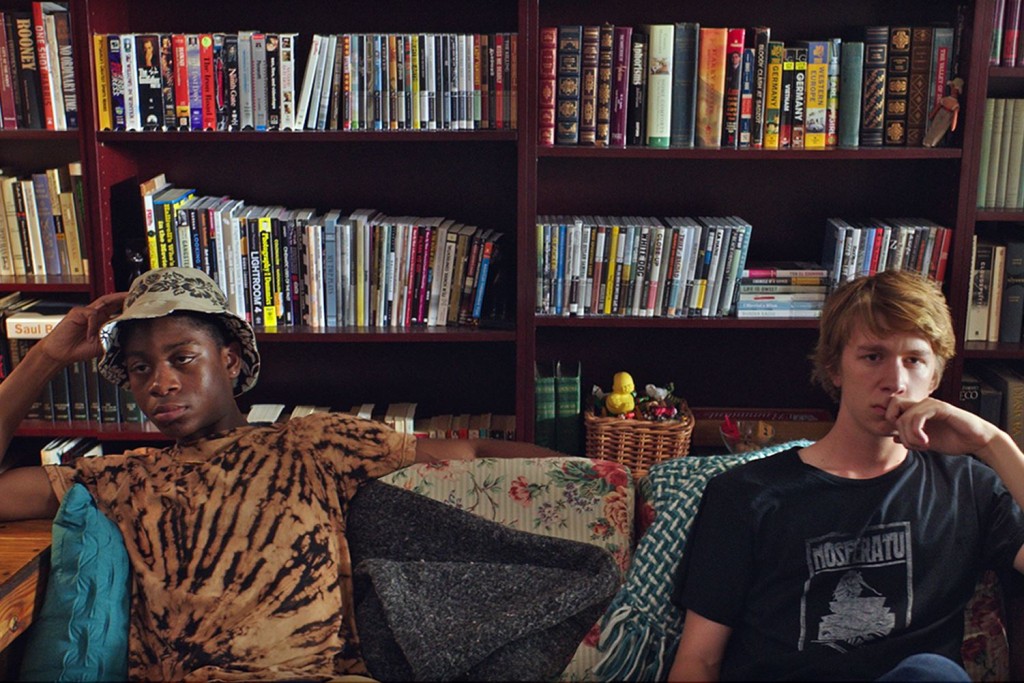Review: Me and Earl and the Dying Girl (2015)
Alfonso Gomez-Rejon’s Me and Earl and the Dying Girl isn’t very good. And it could have been. Drenched in Criterion Collection fetishism and foreign-film references, with an obviously talented filmmaker directing the show and young actors who can carry a scene without falsity, Me and Earl and the Dying Girl has potential. Unfortunately, it tells its story in the most predictable and frustrating way imaginable, playing up the quirks of American independent cinema while committing the sin of turning the entirety of its kooky supporting cast into a roll call of stereotypes in order to redeem its narcissistic male protagonist.
That protagonist is Greg Gaines (Thomas Mann), an awkward senior in high school who makes low-budget recreations of famous foreign films with his friend Earl (Ronald Cyler II). Of course, Greg doesn’t refer to Earl as his friend, instead calling him his “co-worker.” He can’t bring himself to label Earl a friend because of his emotional constipation and general inability to accept others’ interest in himself. He’s self-loathing but also solipsistic—a popular combination. He belongs to every clique at school and none of them—and he views all these cliques as affiliations out of an 80s teen comedy and not the organic beast that exists in the high school of reality. Greg is a disconnected boy.
Enter Rachel (Olivia Cooke), a high school acquaintance diagnosed with leukemia: the manic pixie dream dying-girl. Greg’s mom (Connie Britton) pressures him to hang out with her. He agrees because his mom is persistent. Rachel thinks Greg is doing it out of pity. Greg makes it clear to her that he’s doing it to avoid his mom’s nagging. This is one of the rare moments in the film where Greg is honest about himself and his motivations. For the rest of the film, he’s too stuck inside his own head, too oblivious to his effect on others. Sadly, the film is so aligned with Greg’s perspective, the entire film starts to excuse his behaviour as it progresses. It stops being a portrait of a narcissistic teenager and starts being a justification of him.
It doesn’t help that Rachel is hardly a character. Confined to the bedroom where Greg visits her to show her his and Earl’s silly movies, Rachel lacks any real characteristics of her own. She wears nice hats and is a little caustic and her mom is a mourning souse (Molly Shannon), but we don’t know what she likes and what her tastes are or even what she wanted to do with her life before cancer struck her down. Her defining trait is her cancer. She is nothing more than the “Dying Girl” of the title. Perhaps this is how Greg sees her and, thus, the film ought to be excused for such a shallow depiction, but that doesn’t make such a depiction interesting.
Me and Earl and the Dying Girl’s handling of Rachel shows how it stumbles in its depiction of cancer. Compared to last year’s The Fault in Our Stars, the teen cancer romance based on John Green’s smash bestseller, the film treats the illness dishonestly. Yes, it’s more ironic and cynical and avoids some of the overwhelming earnestness and faux-poignancy of Green’s work. But unlike The Fault in Our Stars, it doesn’t have any of the emotional honesty of cancer’s effects on families. We never see Rachel’s family grappling with the crushing aspect of her illness, unable to make it through a conversation without tears. We never see Rachel before she had cancer, and thus, cannot trace its effects on her. Cancer is messy and big, and to ignore the big emotions it produces is to depict it falsely.
All this comes back to its perspective. We’re so stuck in Greg’s head, we’re not allowed to see any of the big moments in Rachel’s life. We don’t see any of the big moments in anyone’s lives, actually. We don’t see Earl grappling with his economic situation or dealing with being a poor black kid in a mostly white school. We don’t see Greg’s sociology professor dad (Nick Offerman) go to work. We don’t see why Greg’s mom is so adamant about pushing him to visit Rachel. We don’t see any of this because the perspective doesn’t allow us. It reduces everyone to stereotypes: Earl, the black friend blessed with wisdom; Greg’s dad, the joke of a Liberal Arts professor; his mom, the nag; Rachel, the cancer girl.
I knew a few people like Greg in high school. To others, I might even have appeared to be a Greg. But the fact that Greg is a character I recognize from my own experience doesn’t mean I want to spend all 105 minutes of a movie with him. I cannot comprehend why Gomez-Rejon restricts the film so severely to Greg’s perspective. It’s a choice that ends up making every other character a stereotype. It cripples the film without illuminating anything beyond Greg’s narcissism, which is evident from early on.
All the nifty camerawork–the steadicam constantly pushing in on people’s faces as they speak or the use of wide lenses to depict cramped locations, distorting the picture so that it’s like something out a David Lynch picture—cannot distract from the hollowness of the character at its centre and the film’s eventual celebration of his self-satisfied maturation. Gomez-Rejon is clearly a talented filmmaker with a knack for invention and a well-placed Werner Herzog reference. But here he chooses to tell the story in a way that robs it of any potential humour or poignancy.
4 out of 10
Me and Earl and the Dying Girl (2015, USA)
Directed by Alfonso Gomez-Rejon; written by Jesse Andrews based on his novel; starring Thomas Mann, Olivia Cooke, Ronald Cyler II, with Nick Offerman, Jon Bernthal, Molly Shannon, and Connie Britton.
